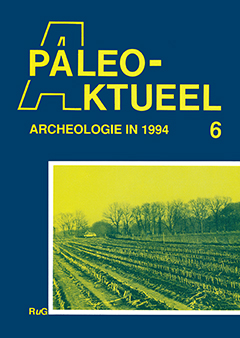TOCH RUNEN UIT WIJNALDUM (FR.)?
Samenvatting
Sometimes pottery among ornamental lines shows some deliberate signs that look like runes, and sometimes even are runes. In a few cases the presence of runic writing is unambiguous, e.g. the inscriptions on the Loveden Hill pot and the Spang Hill urns, both from England, 5th or 6th century AD. Recently a fragment of a pot was found at Wijnaldum, clearly showing a sign that resembles on a rune. More objects are known with just one or two runes, including at least four with an a rune. These finds date for the greater part from the Migration Period, but a piece of earthenware from Rendsborg-Eckernförde, showing an a and an o rune, dates from the 1st century AD. The point of interest is whether these signs really are to be interpreted as runes and if so, what they mean. What is the possible connection between ornamental signs and runes? What is the relation between symbolism and writing among Germanic tribes in the Early Middle Ages? The author suggests that our knowledge of runic usage might increase by studying the social context in which runic writing was able to emerge.

